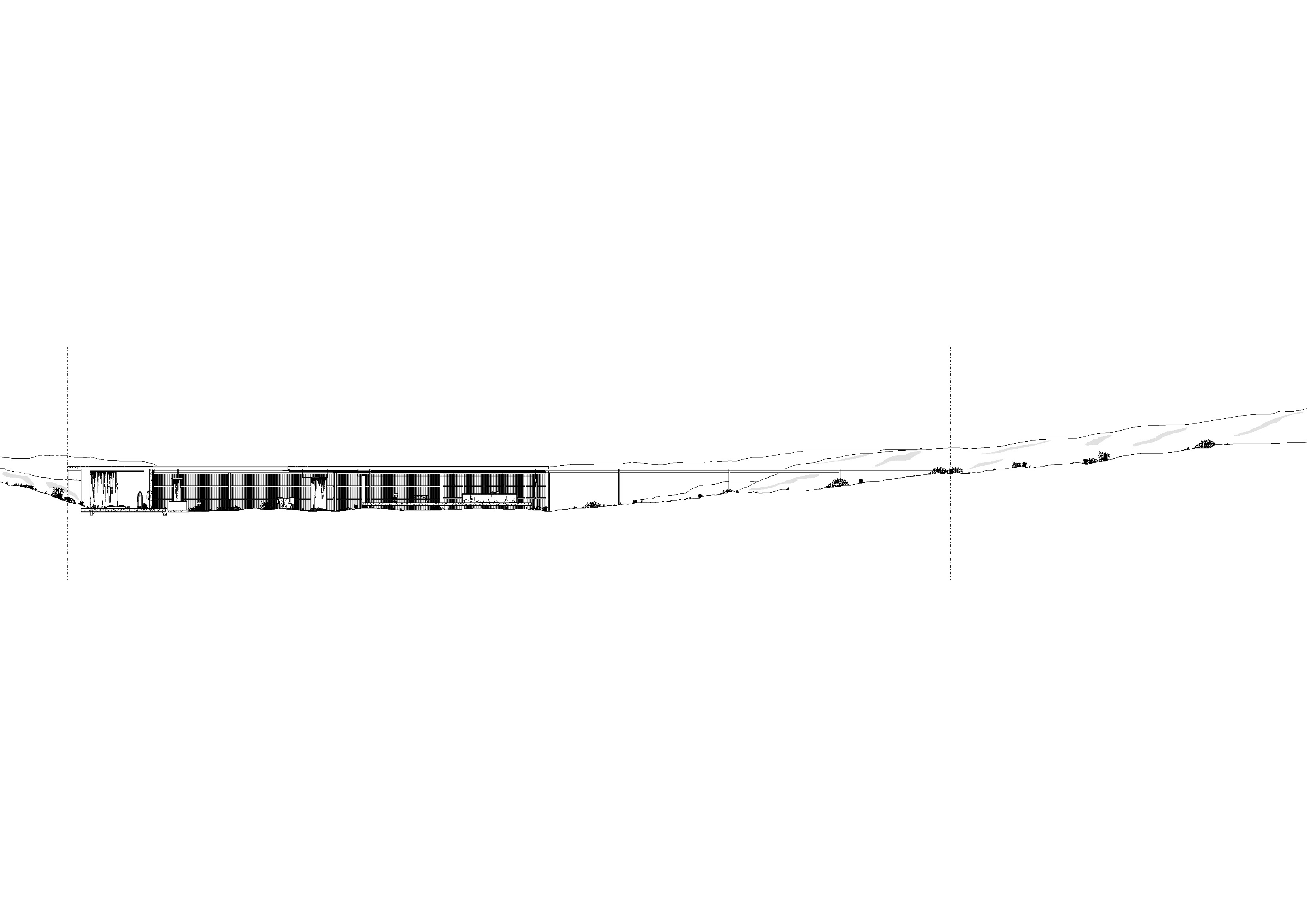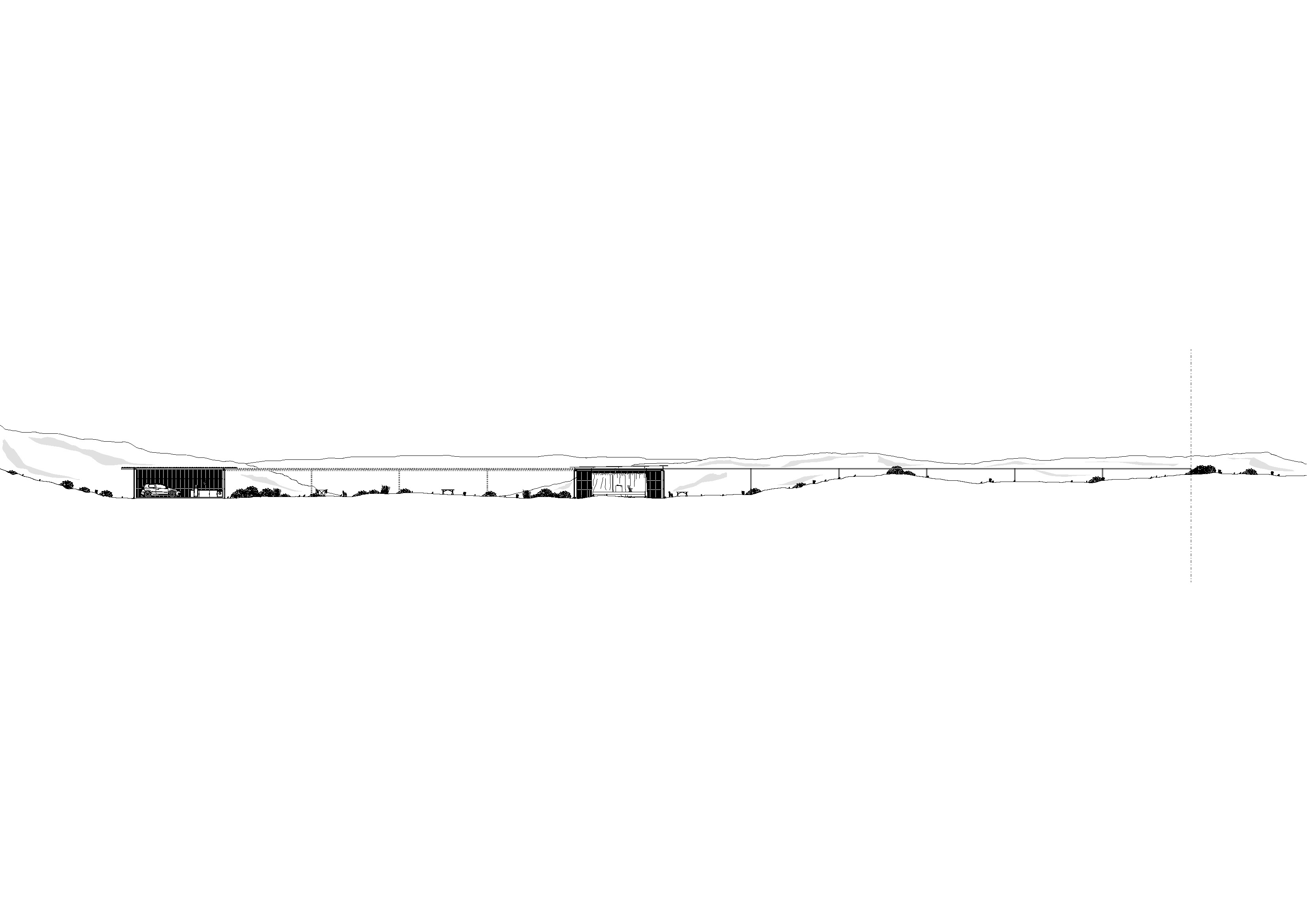
Site Plan

Exterior Impression - Site

Elevation - Site 01

Elevation - Site 02

Exterior Impression - Site 02

Section 01

Section 02

Plan 01

Exterior Impression - Site 03

Perspective

Section 03

Interior Impression - Site 04

Plan 02

Section 04
Project Overview
“Boundaries and area. A series of steps “allow” ground to be domesticated.
So, ground becomes site, site becomes potential. Negotiated, zoned, cultivated, tended to, cared for.
Setbacks and provisions; foundations, slabs and openings under a roof.
A bed, essential utilities, and some storage; site houses home and house occupies site.
But what dwells between site and building? The garden of course! Call it the front yard, the backyard, the courtyard, some gravel, weeds growing along side, or even those potted plants that inhabit a kind of interior - the garden dwells at the ambiguous edge of domesticity, somewhere between house and its site.
From the banal to the absurd Housing, Home and Contents: A Soft Focus on Domestic Things critically re-evaluates architecture’s role in understanding the relationship between site, garden, house and home...”
Colby Vexler and Pricilla Heung
Housing, Home and Contents.
Domesticity
Domesticity recognises the conception of itself. It seeks to own, occupy, inhabit, tame and maintain. And yet it is precisely such which distance itself from the rural condition. Domesticity exists autonomously within the rural landscape - it is neither here nor there - but oscillates within the conditions that constitutes site. It exists beyond, between, under and within. Site itself never neces sarily becomes domestic, but the domestic chooses its own site.
The domestic becomes centered through the constant negotiation between owner, user, boundary and distance. Domesticity negates the expansive rule of the rural. To understand the center, is to de construct its surroundings. The center creating opportunity, provid ing a resilient structure in which reveals domesticity’s dependence on both the rural and the acts within the home. The forces that frag ment the site become irrelevant, allowing domesticity to be apart from the context it is a part of.
Yet, the vastness of the rural condition consumes the autonomy of the home. Through an exhausted negotiation between the controlla ble and un-controllable, the edge of domesticity reveals itself. The edge becomes a familiar presence, yet the domestic ignores, reveal ing its control on the seamless expanse.
Domesticity enters the rural condition, as a condition itself - the ability to be a part of, or apart from. Domesticity is entered through a process, the act of arriving or leaving. The home becomes the entry into the domestic. To access what is stored and provided. An experience of thresholds, becoming the extension in which the domestic oscillates.
Deconstruction (Jacques Derrida)
Deconstruction reveals that always present possibility, that which break with the originality of their supposed conception to point toward what is in fact residually ignored, latent or concealed. Yet deconstruction is not definitive, and never exhaustive, though certainly exhausting.
Deconstruction perpetually oscillates between relentless inquiry and methodological restraint. It overturns hierarchy and logics, and dwells within their structural gaps. The inversion of such swaps the position of dominate and subordinate, and allows for the perpetual presence of new contradictions, tensions and het erogeneities to be discovered.
Deconstruction is not a process, subject, or pre-position, but “it criticizes the very language needed to explain it.”
Rural - Plot
When within, or looking on, the rural appears expansive; a distant view with perpetually vanishing edges. The rural implies remoteness, sparseness, vastness, extreme scales and disparate proportions. Yet site implies a fixed or particular place, one concerned with demarca tion, dimensions and tangible outlines. Hectares quantify vastness, fences define ownership, and the distant center operates as the percep tion of such.
What then is the rural site but the negotiation of expansiveness and enclosure, vastness and constraint, and ambiguity and determinacy?
Within a vast field, the plot exists, bound within a fine wire fence, yet it is too feint to see from a distant centre. The expansive cover is projected onto the field, appearing as a horizon, a re-interpreted topography of its expansive surroundings. The rural site appearing seamless, horizon to horizon, not site and context, but distant views,
and vanishing edges.
The rural site negotiates the relations between occupation, demarca tion and rurality —in its broadest sense. On one hand the rural site is defined by, and bound to use, economics and legislation, and on the other hand it is always distant to such prospects. To re-occupy, re-in habit or to dwell?
Bound and divided, owned and occupied, cultivated or unkept. The rural site plots, but it can never capture the rural within itself.
Housing, Home and Contents (Studio 26)
Architect: Chris van Corler
Tutor: Colby Vexler & Pricila Heung
Year: 2020
Location: Melbourne, Australia
Status: Proposal